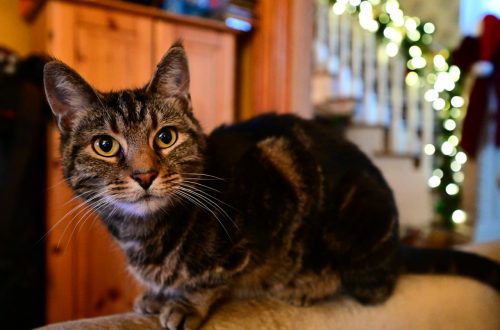Woodshop Time: Hall Coat Rack
 Hello world. It has been a little bit since I posted a build article here on a woodshop project, so today I’m writing two! The first is for a coat rack that I built for our front hall. Like most of the woodshop projects, this started when Jenny said, “I wish we had hooks for coats in the hallway.” I said, “I can do that!” Then some time passed. A long, long time passed. Then some more time passed. Then I got my act in gear and started work!
Hello world. It has been a little bit since I posted a build article here on a woodshop project, so today I’m writing two! The first is for a coat rack that I built for our front hall. Like most of the woodshop projects, this started when Jenny said, “I wish we had hooks for coats in the hallway.” I said, “I can do that!” Then some time passed. A long, long time passed. Then some more time passed. Then I got my act in gear and started work!
I started building house furniture out of white oak a while ago. I’m slowly transitioning to cherry for some things, as I’ve found some great local sources. My previous wood supplier’s price on cherry was quite steep, so I had been going with the white oak. I still had some in the shop, so that won.
I had purchased one of the Freud Adjustable Rail and Stile router bit sets to assist me when making raised- and glass-panel doors and frames. I made a few the hard way, and thought this set would make life easier. In fact, it makes life a LOT easier! Since this frame was going to be potentially holding a decent amount of weight, I wanted to make sure it was strong and had something more than stub tenons. The adjustable bit set allows one to make tenons of any length, and I have a mortising machine, so I was in business.
After prepping all of my rough stock to rough length + 4″ (to cope with planer snipe), I began to cut all of the joinery on the straight parts. The top rail was to be curved, so I wanted to get the curve traced onto the board so that I could cut the joinery square before I cut the curve into the rail. I took an ultra-thin walnut slice I keep for just this purpose and clamped it at each end, then bent it up to yield a pleasing curve. Using a pencil, I traced one side of the curve directly against the guide, then used a compass spaced for the final rail width to trace the other side from the same guide. I could then cut the joinery on this piece while it was still square, saving me a bunch of jig-making.
Once the joinery was cut on the top rail piece, I took it to the bandsaw to rough-out the curves. This worked quite well. Moving slowly and carefully, I had a cut that was just about to shape and just needed some smoothing. I didn’t have the right tool for this, though, so I went and got myself a spokeshave!

The spokeshave cleaned up the top and bottom of the rail quickly and easily, and a card scraper left it nearly finish-ready. Of course, I still had to cut the bead on the bottom part of the rail to match the stiles. This is where the project went a little sideways. And boy, do I wish I had photos of this mess. I thought about this operation and realized that I had a perfect match for the curve on the waste from top of the rail. This would allow me a practice cut. I almost went and did the cut on the workpiece, and I’m glad I didn’t. I clamped-up the test piece in a quick jig I had created for this operation, and started the cut. Everything was fine until the end, when the workpiece caught, got pulled out of the jig, and totally destroyed the end. This gave me chance to appreciate the fact that I used a jig instead of my hands, and also told me what was wrong with the jig and my operation. I slowed the bit and the feedrate down, made the jig more grippy on the bottom, and made sure I wasn’t letting the workpiece wind itself around the bit. Especially at the start and end, I had to make sure that I took a few light passes instead of one full-depth pass, and I figured it would work. Fortunately, I was right!

A quick layout before the test fit, then…

Hooray! Everything fits! The bit set worked perfectly. I had to clean the edges of a couple of the mortises I cut with the mortising machine for a cleaner fit, but it all worked, and it was all square (even better!).
I had debated about what to do with the bottom panel. I was either going to put a mirror panel down there and put an etching on it of some sort, or I was going to put a carved panel in there. I had thought about getting some tiles and making a small mosaic or something in the space. I glued-up the frame and took it to the local glass shop to have them cut mirrors for both the top and bottom panels. The price was nearly the same to have them cut the bottom panel, too, so I just did both. A short while later, a trip to the Carnegie Museum’s furniture collection swayed me towards the carved panel.

I’m not an expert carver by any means, but I enjoy dabbling now and then. There are some original pieces in the house that have some spoon carvings of a fairly particular floral pattern, so I elaborated on those to make this panel out of walnut. Knowing it would finish darker than the oak, I thought it would provide a nice visual break below the mirror.

With the mirrors back from the glass shop, I temporarily mounted the carved panel and the mirror for a test fit before I started finishing work. I was putting a slight stain on the white oak to darken it a bit to match our other pieces that I had finished with a simple oil and varnish blend, but I didn’t want to stain the panel and have it come out too dark, so I finished the separately and then mounted the panel in the frame after the fact.


I’m a huge fan of the General Finishes Seal-a-Cel and Arm-R-Seal products, and that’s what I used here. The panel got Seal-a-Cel and the frame got a General Finishes “golden oak” before both got a few applications of Arm-R-Seal topcoat.
Then, it was time for hardware. Oh, hardware. I agonize over hardware. It is the finishing touch on so many projects, and can be the thing that makes a project work or makes me hate life. For the hooks, I had ordered a number of Victorian-style hooks from Lee Valley. I also ordered mirror hanging keyhole mounts from them. Knowing that this was going to be bearing weight, I didn’t want to take any chances. I figured four mounts (top and bottom of each side) into two studs should hold it!

After the mount positions were determined, I marked and cut mortises and clearance holes for them.

Since these were cut after finishing, you can see where I got a little bit of tear-out where my marking knife followed the grain because I hadn’t sharpened it adequately. Oops.

I used a set of marking pins held in with tape to make witness marks on the wall to guide me when drilling into the framework.

Of course, best laid plans…. I had measured everything a few times, and thought I knew the placement of the studs in the destination wall. Unfortunately, I was wrong. As old as this house is, the wall studs have somewhat, um, arbitrary spacing, it seems. The outside walls seem to be more timber than stud framing, so I lost this time. I looked at the situation and realized I could get two anchors into a crossmember and use two molly bolts for the other two anchors, which worked well.
As with most projects, the design phase happened pretty quickly, but then it languished on paper for a while. Then I got the stock prepped and a bunch of the joinery done and glued-up, then it sat for a while longer before I finally got around to finish and completion. Now it has been serving us for a little over a year, helping to brighten our hall and hold our stuff.
Next up, something else that holds some of our stuff: A blanket chest!



2 Comments
Sarah
I’ll need one of these whenever we finally get a house. Please. And thank you.
Pingback: